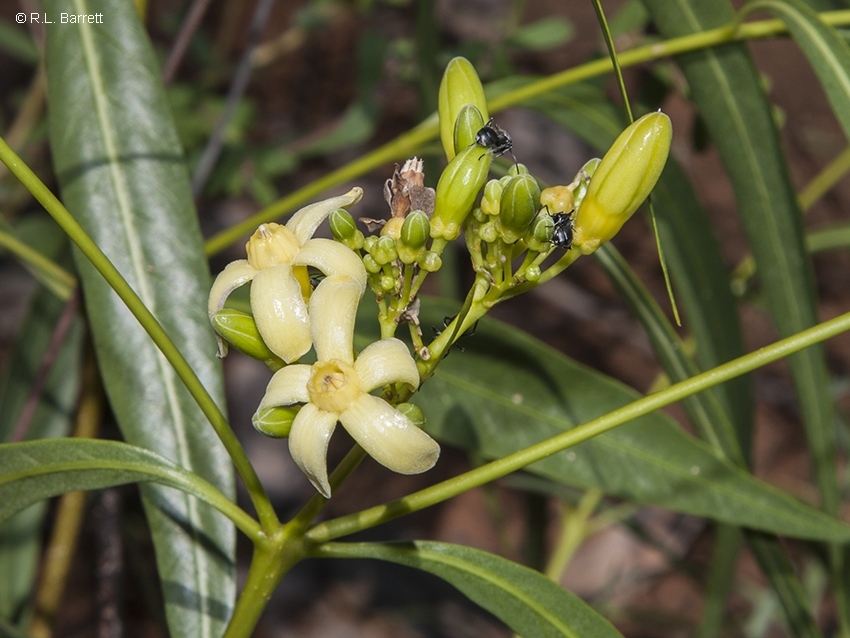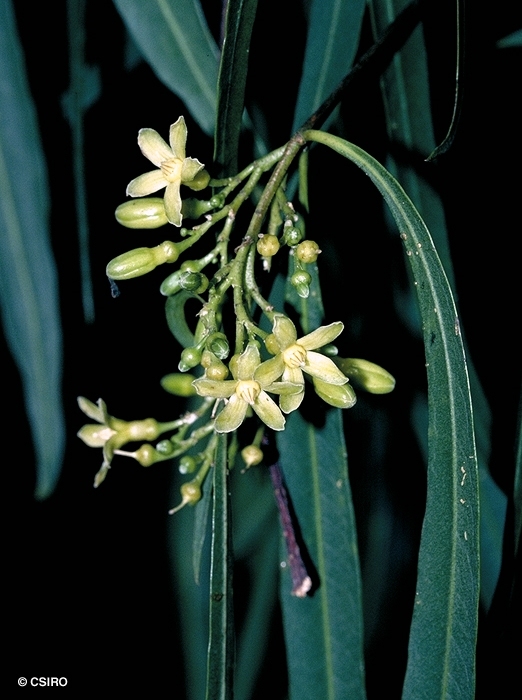Australian Tropical Rainforest Plants - Online edition
Wrightia saligna (R.Br.) F.Muell. ex Benth.







Bentham, G. (1868) Flora Australiensis 4: 316.
Milkwood; Milk-bush; Yellow Wax Flower
Occasionally grows into a small tree but usually flowers and fruits as a shrub about 2-3 m tall.
Inflorescence shorter than the leaves. Flowers about 12-16 mm diam. Calyx lobes about 1.5 mm long, minutely puberulent on the outer surface. Calyx with ten yellow or orange scale-like glands on the inner surface, each gland about half as long as the calyx lobes. Corolla tube 2-3.5 mm long, lobes subovate, obtuse to ovate, 4-7 mm long. Corona yellow, about 2.5 mm long, forming a crenulate cup around the stamens. Anthers about 4 mm long, fused to form a cone around the style. Tips and backs of the anthers clothed in pale bristle-like hairs. Pollen white or translucent. Ovaries glabrous, about 1.5 mm long, connected to one another only at the apex by means of the style. Style about 2 mm long. Style wider than the stigma, the junction marked by a ring of hairs.
Follicles 10-20 cm long. Seeds about 10-15 mm long with a tuft of white silky hairs about 20-35 mm long at one end. Embryo about 13-15 mm long. Cotyledons rolled lengthwise, like a cigar. Endosperm scanty or absent at maturity.
Cotyledons ovate, lanceolate to triangular, about 12-30 x 11-20 mm. First pair of leaves linear to lanceolate. At the tenth leaf stage: leaves sessile, linear. Milky exudate from stems, petioles and leaf blades. Stipules caducous, less than 0.5 mm long. Seed germination time 11 to 12 days.
Endemic to Australia, occurs in WA, NT, CYP, NEQ and CEQ. Altitudinal range from near sea level to 900 m. Usually grows in open forest but occasionally found in monsoon forest.
Plants often make suckers many metres from the parent tree.





